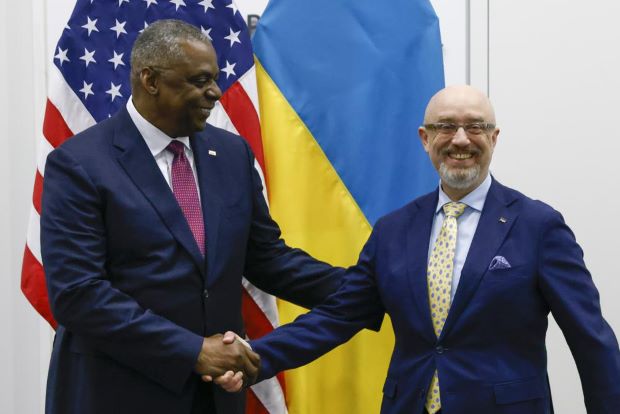US and NATO allies prepare to announce more military aid for Ukraine

By Eric Schmitt and David E. Sanger
BRUSSELS – Defence Secretary Lloyd Austin on Wednesday (15) urged Western allies to redouble their military aid to Ukraine, warning that it “is facing a pivotal moment on the battlefield” in the nearly four-month war with Russia.
“We can’t afford to let up, and we can’t lose steam,” Austin told a meeting in Brussels of nearly 50 countries known as the Ukraine Defence Contact Group. He praised the flow of tanks, missiles and artillery provided to Ukraine so far but said it was not enough, adding, “The stakes are too high.”
The United States and its allies were expected to announce the delivery of more weapons and equipment later Wednesday in response to increasingly urgent pleas from President Volodymyr Zelenskyy for more heavy arms to retake eastern territory lost to Russia and to defend against Russian missile attacks.
Ukraine is struggling to hold off a Russian onslaught in the east, with Moscow’s forces on the verge of capturing the strategic city of Sievierodonetsk. Kyiv has voiced frustration that many of the heavy weapons promised by its Western allies have not arrived, as Russia uses its superior artillery to seize control of more of the eastern Donbas region.
The comments came as administration officials say they are increasingly looking at options for how to handle a sustained conflict — and whether a cease-fire, or a formal armistice similar to the one reached in Korea 70 years ago, would help or hurt the Ukrainian cause.
Their analysis, officials say, has been fairly pessimistic. They fear that President Vladimir Putin of Russia might use a cessation of hostilities to rebuild his military, and perhaps seek another opportunity to take all of Ukraine, his objective when the war began Feb. 24.
But they also note that Putin may have little interest in an armistice if it did not result in a relaxation of sanctions. And it would be hard, officials say, to imagine relaxing those sanctions until there is a resolution over who controls the Donbas and other areas that Russia has invaded.
For now, officials say, they are preparing for long-term support of the Ukrainian government and more supply of weapons. But officials are clearly concerned that both American public interest in the conflict and European unity may wane. They are looking for ways to reinvigorate that interest, including inviting Zelenskyy to attend the NATO summit in Madrid at the end of June.
“Russia is using its long-range fires to try to overwhelm Ukrainian positions,” added Austin, a retired four-star Army general. “So we must intensify our shared commitment to Ukraine self-defence, and we must push ourselves even harder to ensure that Ukraine can defend itself.”
The heavy weaponry the United States has so far supplied Ukraine includes 108 howitzers and four HIMARS truck-mounted multiple-launch rocket systems, with missiles that have a range of up to 40 miles, greater than anything that Ukraine currently possesses. The first Ukrainian team is scheduled to complete its training on the HIMARS system Wednesday, and it will be deployed in the battlefield next week, a Biden administration official said. More of the systems are expected to be dispatched to Ukraine, U.S. officials said this week.
On Tuesday (14), a senior Pentagon official pushed back on the idea that the United States or other Western allies were being too cautious in rushing advanced weapons to Ukraine, possibly to avoid escalating a broader fight with Moscow.
“We’re going to provide the Ukrainians what they need to prosecute the targets inside Ukrainian territory,” Colin H. Kahl, the undersecretary of defence for policy, said at a security conference in Washington.
-New York Times

